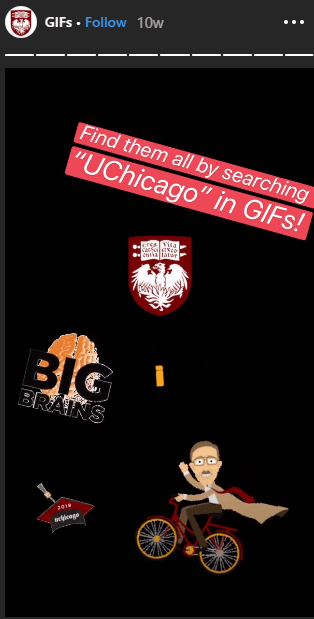 Molly Mattison, Senior Marketing Manager at Adtalem Global Education, is one of the 12 presenters of the 2019-2020 Higher Ed Social Media Conference.
Molly Mattison, Senior Marketing Manager at Adtalem Global Education, is one of the 12 presenters of the 2019-2020 Higher Ed Social Media Conference.
In this 4-question interview, Molly tells us about higher ed social media in 2020, a favorite tool, 3 higher ed social media campaigns as well as strategy and measurement.
1) Where do you think higher ed social media is heading in 2020?
We saw social media channels move further away from acting as publishers in 2019, and a corresponding shift in where our users engaged the most: from the Instagram news feed to stories, and from Facebook company pages to groups. Users want to hear more from each other and less from us – they are craving interactivity, two-way conversations and connections with their peers. The importance of our relationships with influencers, as well as our work to help cultivate new influencers, will continue to grow in 2020. This is nothing new, but a continued shift for schools – our most important role is now as facilitator, rather than broadcaster. Success in 2020 will hinge on our ability to foster community online, create connections and add value to conversations relative to our schools and programs.
2) What’s your favorite new tool for your social media work?
In line with my talk on online reputation management, a new tool we have been using is ReviewTrackers. It’s important to respond quickly to reviews, and it can be a big challenge to regularly monitor and respond on multiple sites, and keep the most relevant stakeholders informed – especially if you have multiple campuses. ReviewTrackers automates a lot of this process – sending notifications to the right people, identifying trends in your reviews and automating some of the response process.
3) What higher ed social media campaigns have recently caught your attention?
The University of Kansas is one to watch in social media. They’ve branded their social media channels around their school chant, including a video Facebook cover, to amazing success. More than 220,000 photos have been tagged with the chant’s hashtag #RockChalk on Instagram, where the KU community has embraced this rallying cry to showcase their school pride.
This may seem simple, but asking your audience questions to gain their insights is something a lot of higher education institutions miss. This recent post from the American University of the Caribbean School of Medicine had a 20% engagement rate on Facebook – much higher than our average engagement rates, or industry benchmarks.
The University of Chicago is one of my favorite higher ed brands in social media. They beautifully highlight the details of their campus, share interesting thought leadership content, but also have fun, including creating branded stickers for Instagram photos.
4) What are your strategic social media goals and how do you measure against these goals?
Social media plays so many important roles in our organization. Our strategic goals include growing awareness and consideration of our schools, providing the highest level of care to our communities, and sharing out social insights to our leadership and broader teams.
Some specific key performance indicators that we measure include:
Engagement: Within our social groups, we look to the percentage of engaged members. On our main pages, we are tracking the engagement rate of our content, as well as total engagements so we continue to grow our reach.
Sentiment: We look to ratings on review sites as an indicator of brand health online.
A conference focusing 100% on higher ed social media?
The 2019-2020 Higher Ed Social Media Conference (now available on-demand!) is a must-attend event for higher ed social media professionals and teams looking for inspiration, ideas and best practices.
Read below what your higher ed colleagues who attended the past editions of the Higher Ed Social Media Conference said about their experience.
